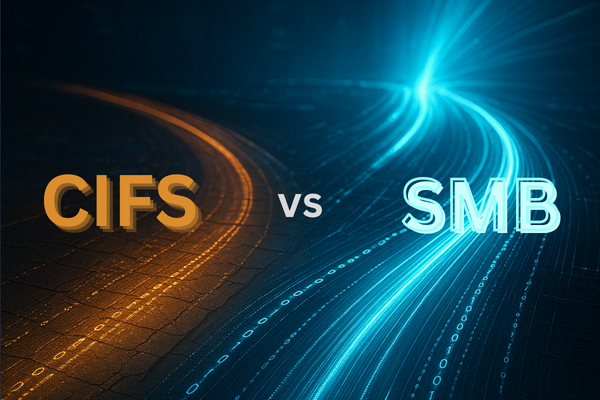Introduction
As cyberattacks grow in sophistication and frequency, Microsoft has introduced new features and measures to secure networks in Windows 11 version 24H2 and Windows Server 2025. Among these enhancements is the “Guest Authentication Off” feature, which ensures that insecure guest access is disabled by default, protecting data and systems from unauthorized access. Visuality Systems, as experts in SMB protocol security, fully aligns with these measures, supporting organizations in maintaining robust network defenses.
What Is Guest Authentication Off?
Guest authentication refers to allowing access to SMB resources without requiring a password. Guest connections pose significant security risks because they:
- Do not require user authentication.
- Do not support critical security measures like SMB signing or encryption.
Recognizing these vulnerabilities, Microsoft has progressively restricted guest access. Inbound guest connections have been disabled by default since Windows Server 2000. More recently, outbound guest connections from Windows 11 Pro clients are also disabled by default, reflecting Microsoft’s ongoing commitment to secure computing environments.
To see these concepts in action and learn more about how to manage SMB guest authentication settings effectively, watch our detailed video tutorial.
Guest Authentication Before the Change
Previously, Windows 11 Pro allowed SMB clients to establish guest connections or fallback to guest authentication when connecting to servers that supported it. This was common for older network storage devices or NAS systems lacking modern authentication protocols. While this facilitated legacy compatibility, it also left networks vulnerable to exploitation.
Guest Authentication After the Change
With the new updates in Windows 11 Pro and Windows Server 2025, outbound guest connections are no longer permitted. If a client attempts to log in using insecure guest credentials, the connection will be rejected. This measure ensures that only secure, authenticated access is permitted, reducing the risk of data breaches and unauthorized activity.
Addressing Guest Authentication Errors
When guest access is disabled, errors may arise if a server expects guest authentication. These errors highlight the risks associated with enabling insecure guest logons:
- Unauthorized agents could potentially read or copy shared data.
- SMB signing and encryption session keys cannot be enabled with guest access.
- SMB1, which is inherently insecure, is disabled by default in modern systems.
Enabling insecure guest logons significantly compromises client security. Instead, organizations are encouraged to upgrade or reconfigure devices to use secure authentication methods.
Controlling Guest Access Behavior
Guest access settings can be controlled using PowerShell. Administrators can modify these settings when absolutely necessary, but with caution to avoid undermining security. In fact, both SMB signing and encryption must be disabled to use guest logons, which is highly discouraged due to the associated risks.
Best Practices and Pitfalls
To manage guest authentication effectively, consider the following guidelines:
Dos
- Disable guest authentication on remote devices or replace them with systems supporting secure protocols.
- Enable auditing for guest outbound logons (available in Windows 11 and Windows Server 2025).
Don’ts
- Avoid enabling guest access unless absolutely necessary.
- Never disable SMB signing and SMB encryption.
- Do not enable SMB1, as it is outdated and insecure.
Conclusion
By disabling guest authentication by default, Microsoft has taken a significant step towards enhancing network security. These changes prevent unauthorized access and ensure that only secure, authenticated connections are permitted. At Visuality Systems, we fully support these measures and ensure that our SMB protocol libraries are aligned with Microsoft’s security advancements. For tailored advice on managing guest authentication or implementing secure SMB protocols, feel free to contact us directly.

Raphael Barki, Head of Marketing, Visuality Systems




